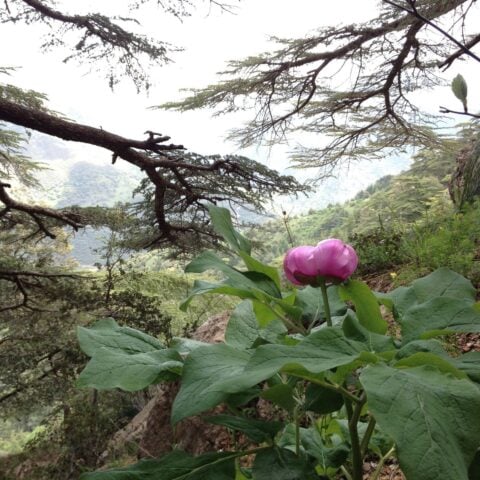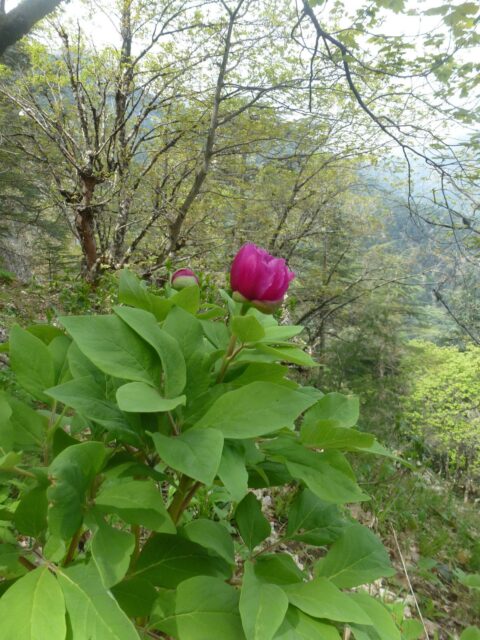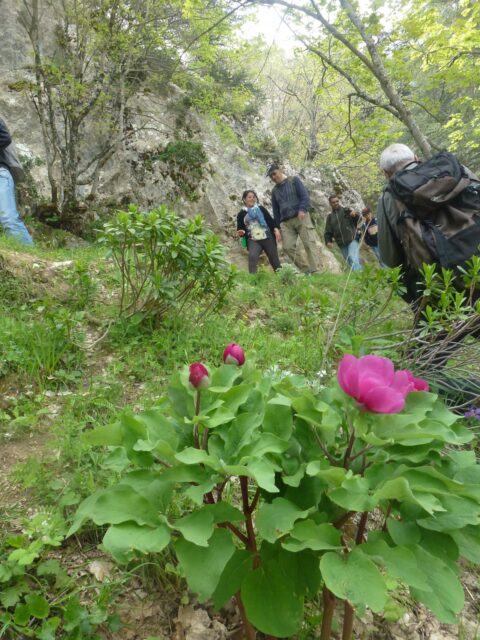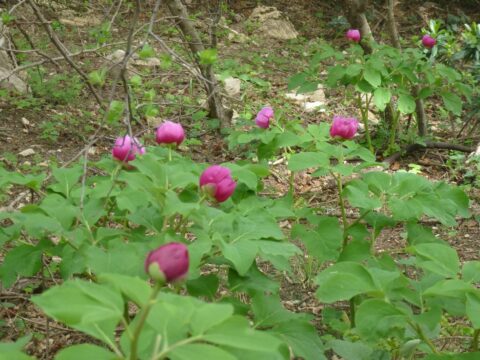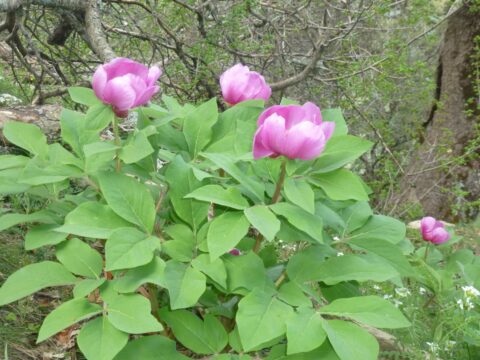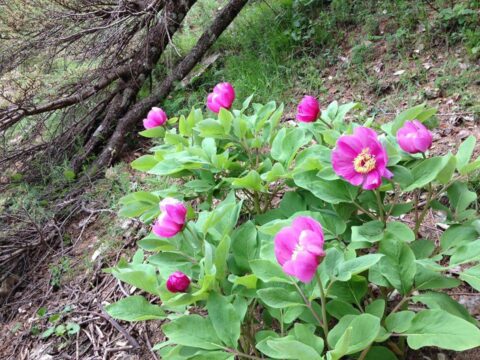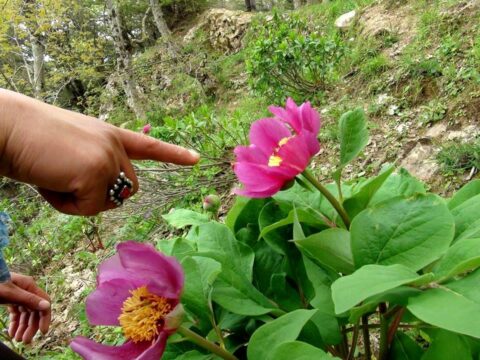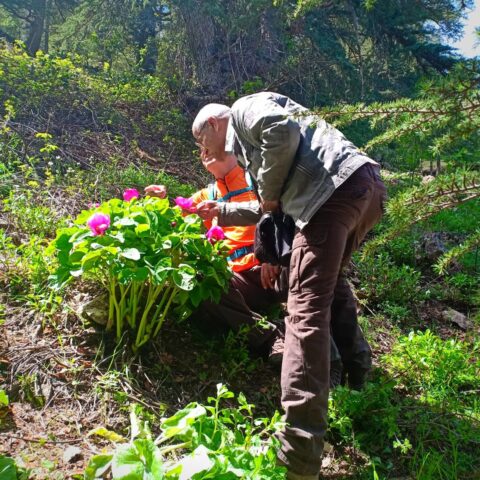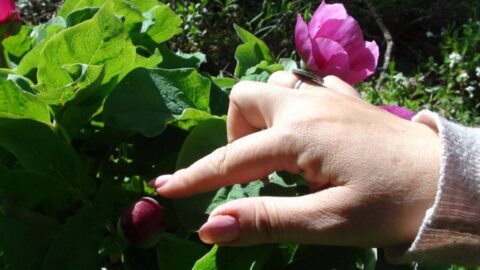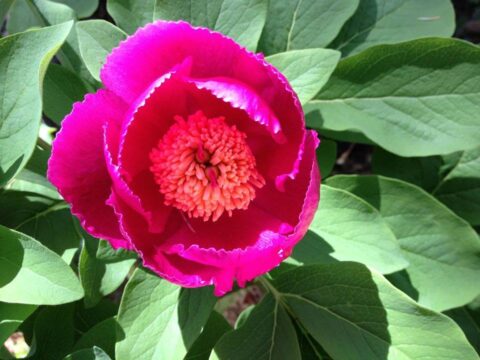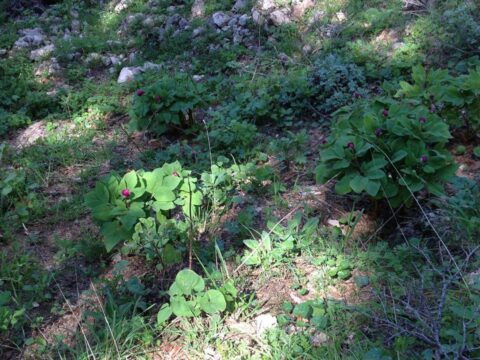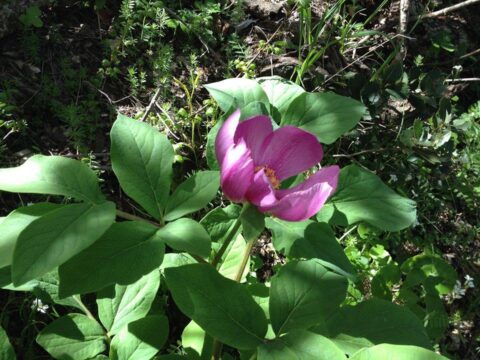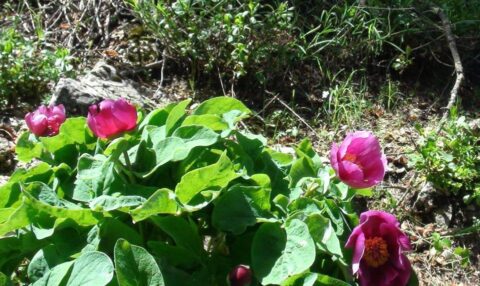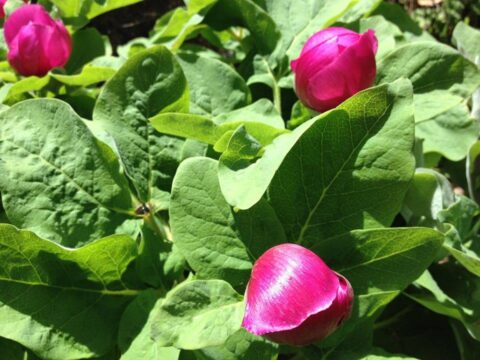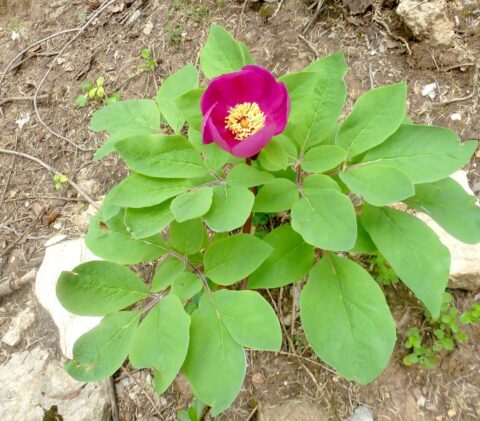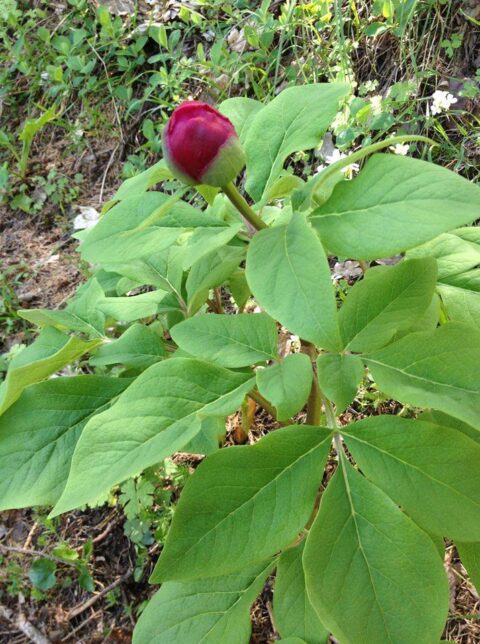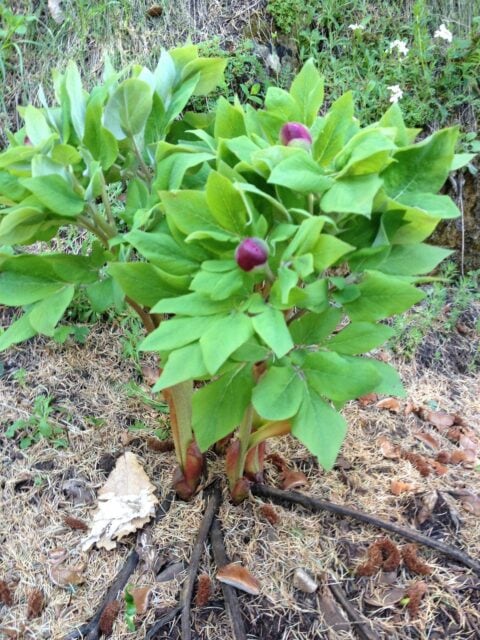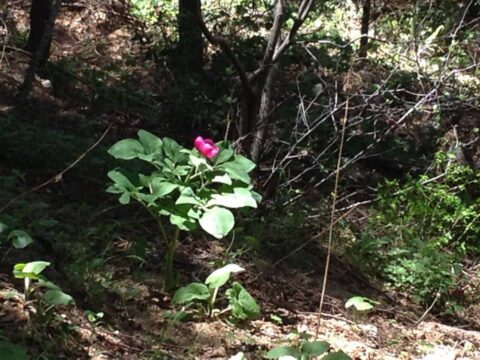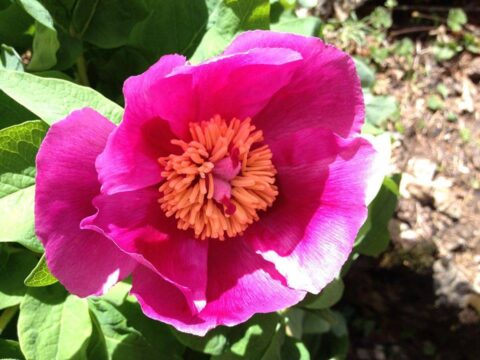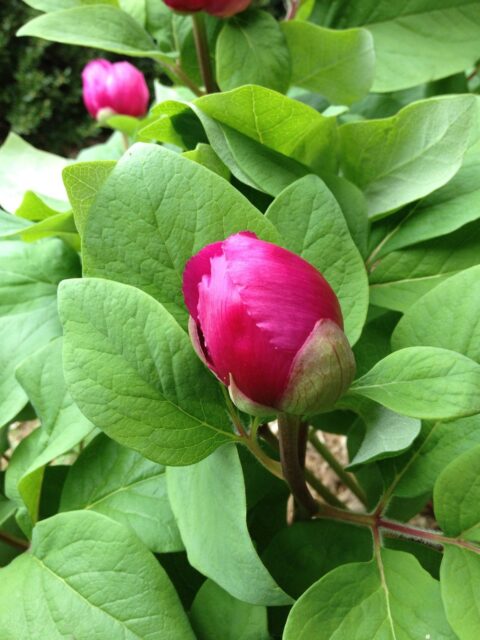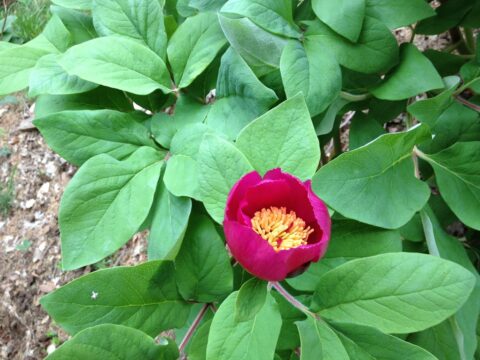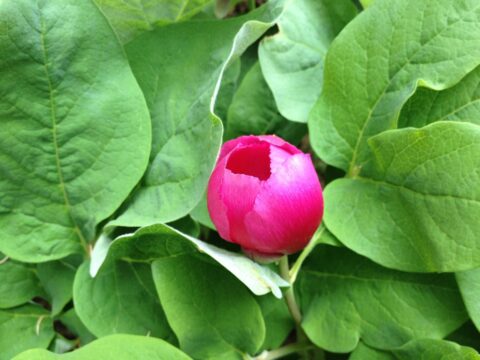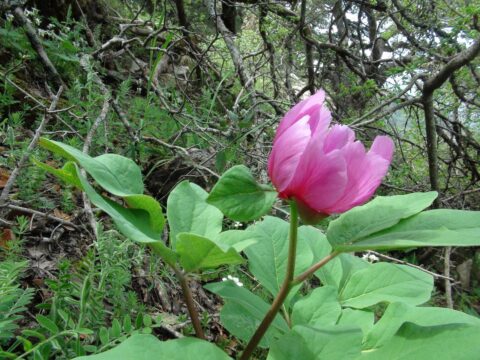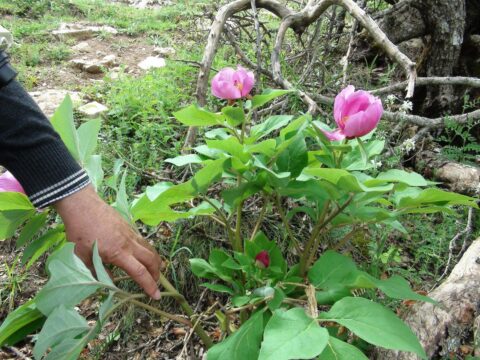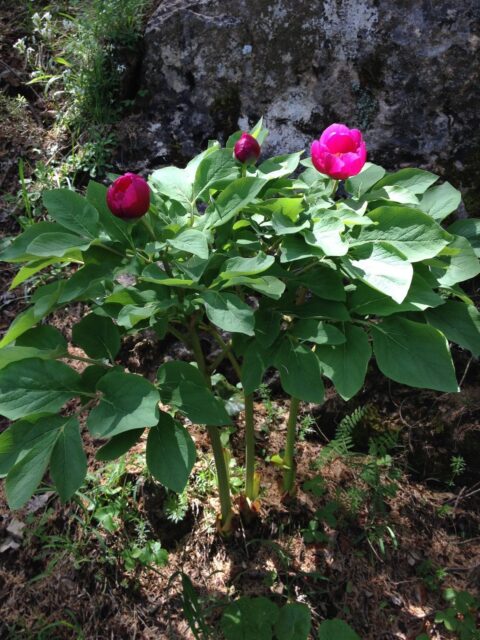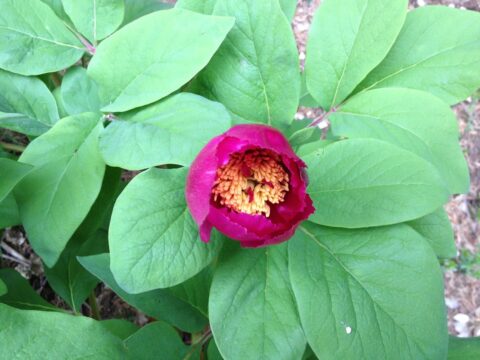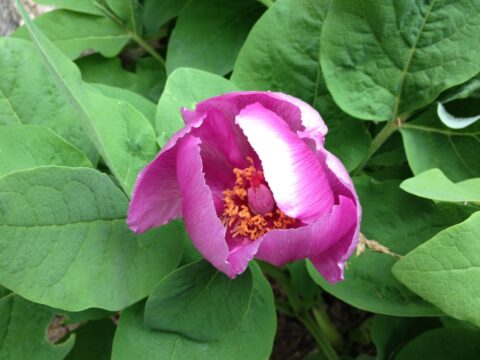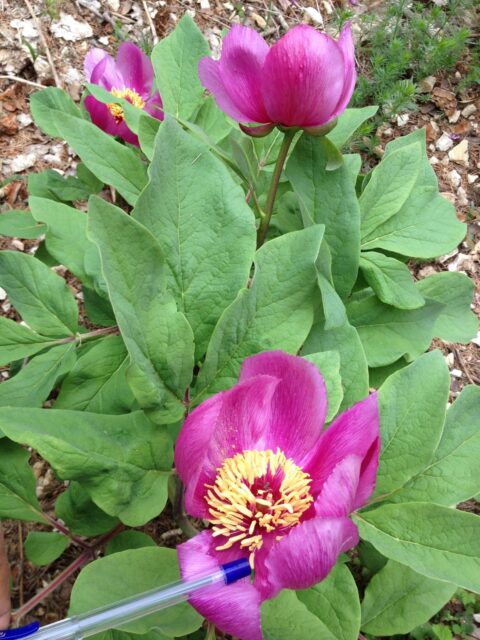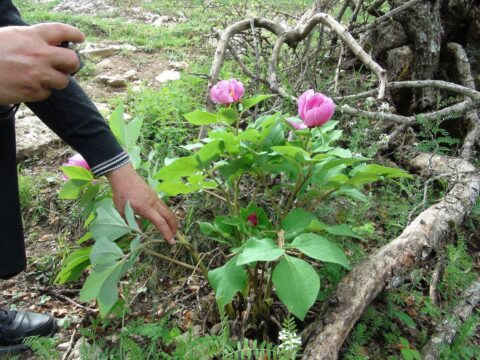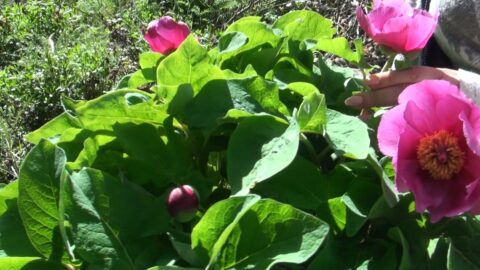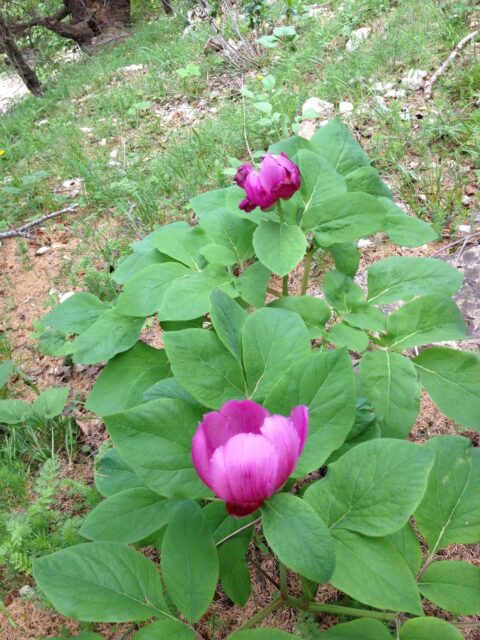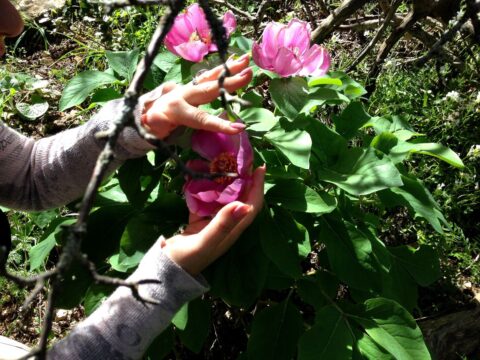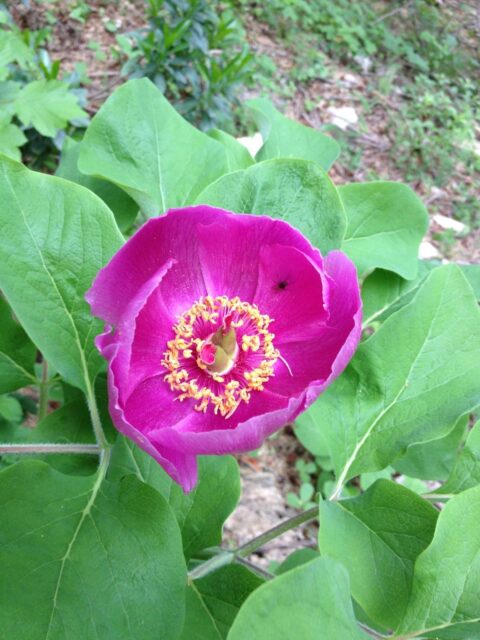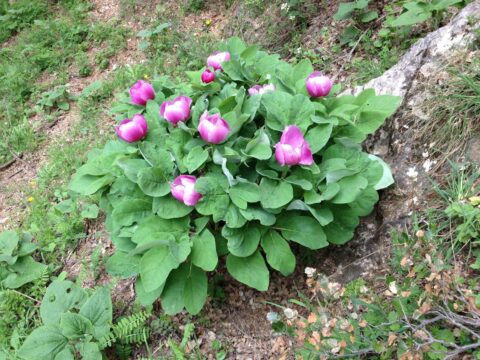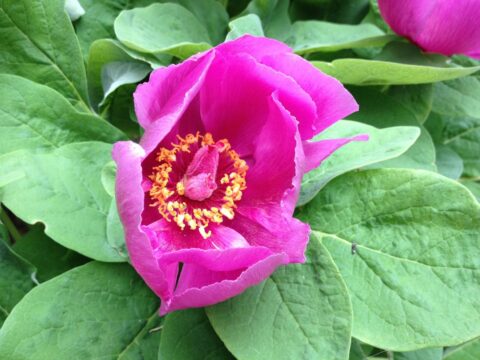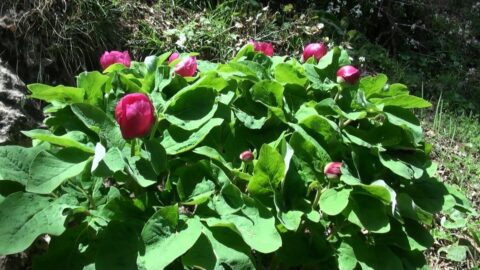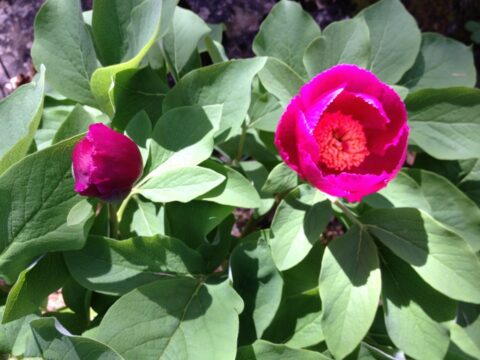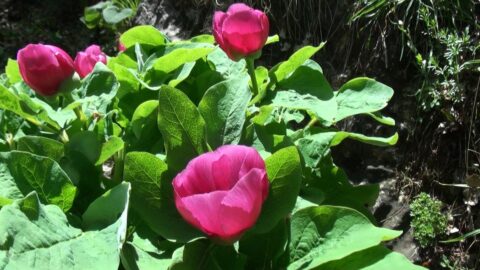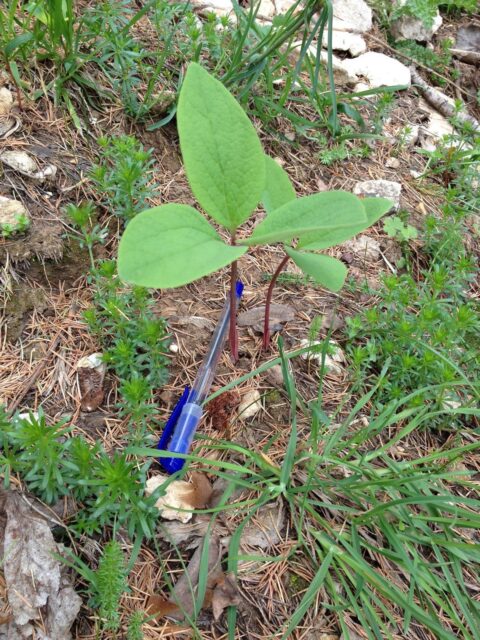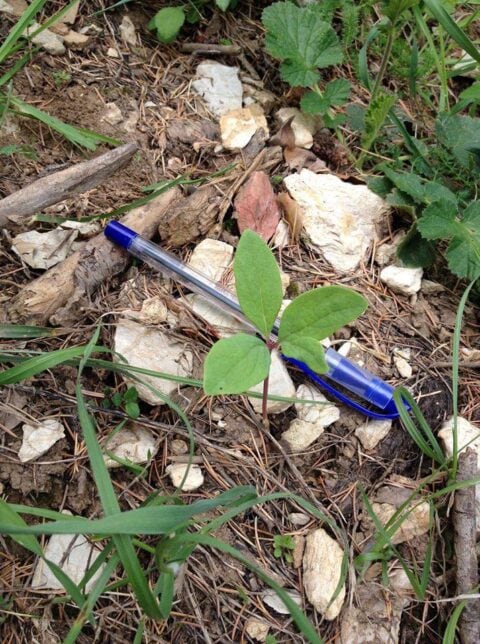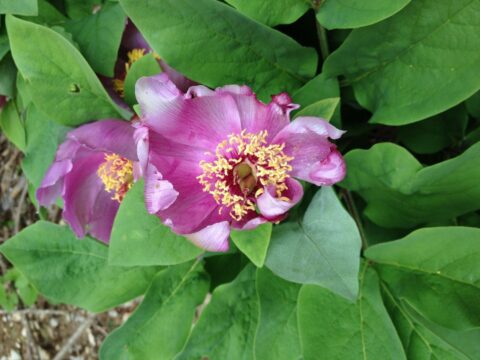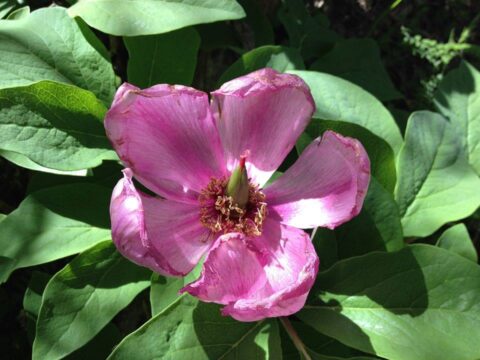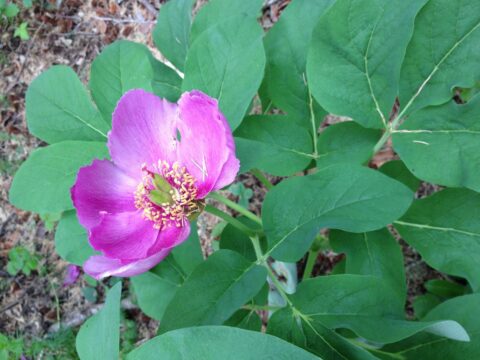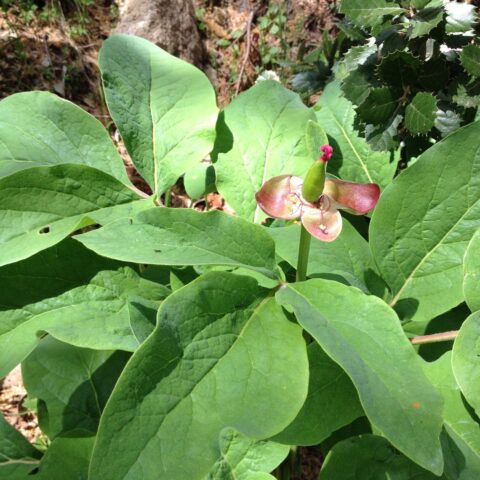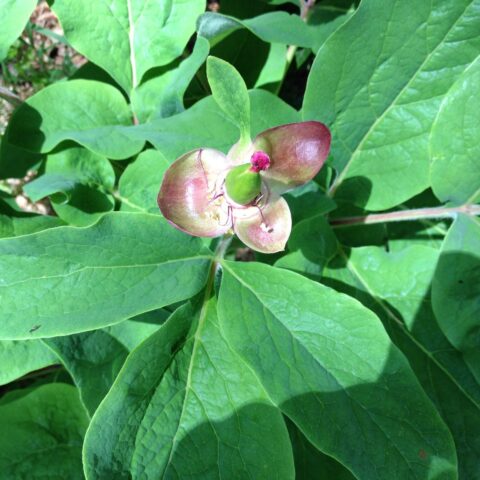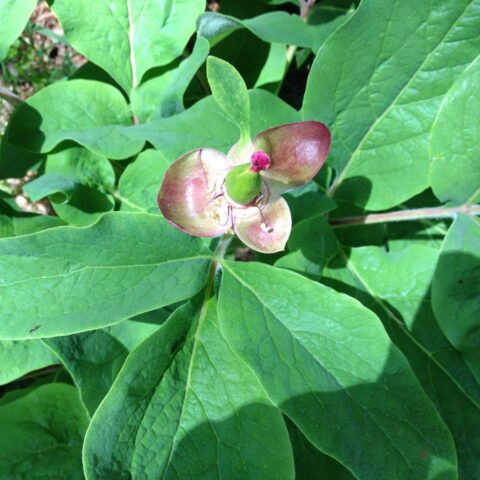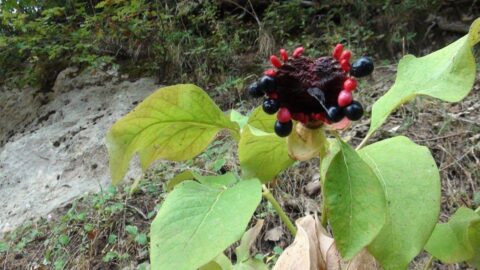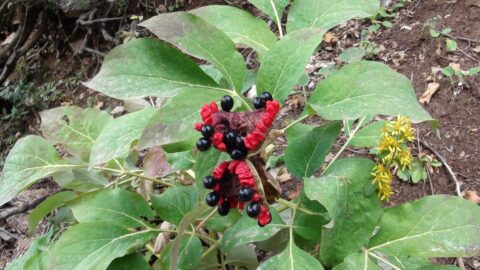Paeonia algeriensis:1
Perennials. Roots unknown. Stems more than 50 cm tall, 0.7—1.0 cm in diameter. Lower leaves biternate with one or several of 9 leaflets segmented and thus with 10—13 leaflets/leaf segments; petioles always villose; leaflets/leaf segments ovate or oblong, rounded or broad—cuneate at the base, acute at the apex, 9—18 cm long, 5.5—9.5 cm broad, always moderate to densely white-villose beneath. Flowers solitary and terminal; involucrate bracts 1, leaf-like, or absent; sepals 3 or 4 in number, orbicular or oblong-orbicular, all rounded at the apex, glabrous, purple inside and at the periphery, 2.5-3.5 cm long, 2—2.5 cm wide; petals pink or red, 5-6 cm long, 3—4 cm wide, rounded at the apex; disk c. 1 mm high, slightly waved, glabrous; carpels mostly single, less frequently 2 in number, nearly always glabrous, very occasionally sparsely hairy; styles 1—3 mm long; stigmas red, 2—3 mm wide. Follicles columnar, 4—5.4 cm long. Seeds black, ovoid—oblong, 9 mm long, 7.5 mm in diameter, seed—coat foveolate.
Chromosome number: Unknown (the only species of Paeonia whose chromosome number is still unknown).
Growing in broad-leaved or mixed broad-leaved and coniferous forests with calcarious soils at altitudes of 1,100—2,000 m. A narrow endemic of Algeria, N Africa, and only along the coastal mountain range, Kabylie, concretely in the Babor Mountain, Magris Mountain, Djurdjura Mountain, and in the vicinity of Tala-Kitane and Kefrida.
The peony in Algeria has been taxonomically variously treated. Cosson, Maire, and Greuter & Burdet recognised it as a variety or subspecies in Paeonia mascula (= P. corallina), Battandier treated it as P. russoi var. coriacea, whereas Stern treated it as a variety within P. coriacea. We examined a total of 16 collections from 13 herbaria, a total of 51 sheets with 65 individuals (or stems). The carpels of the peony in Algeria are nearly always glabrous (54/61, i.e. 88.5%). Carpel numbers are the smallest in sect. Paeonia, mostly single (57%), less frequently two (43%). The follicles of this peony are the largest in sect. Paeonia, 4—5.4 cm long. The petioles and lower leaf surfaces are always villose, and the lower leaves have 10-13 leaflets/ leaf segments which are 9-18 cm long and 5.5—9.5 cm broad, larger than those of its close relatives. Therefore, P. algeriensis is a distinct species. Paeonia mascula differs from it in having carpels numbering mostly 3-4, rarely 1-2, occasionally 5, which are always lanate, and leaves that are usually glabrous or very sparsely hispid beneath. Paeonia coriacea is different from the peony in Algeria in having leaves that are glabrous, very occasionally hairy beneath, carpels numbering 1-4, but mostly 2 (52%) or 1 (28%), and smaller follicles and leaflets/leaf segments. Paeonia corsica (a diploid) has 3-4 carpels, less frequently 2 or 5, very occasionally 1, which are usually tomentose, and leaflets/leaf segments that mostly number 9 and are smaller in size.
All images below were taken in Algeria (Kabylie, Djurdjura mountains) by Mohamed Tabèche on his blog.
- Hong, De-Yuan. “Peonies of the World. Taxonomy and phytogeography.” Kew: Royal Botanic Gardens, 2010, p. 202.[↩]
